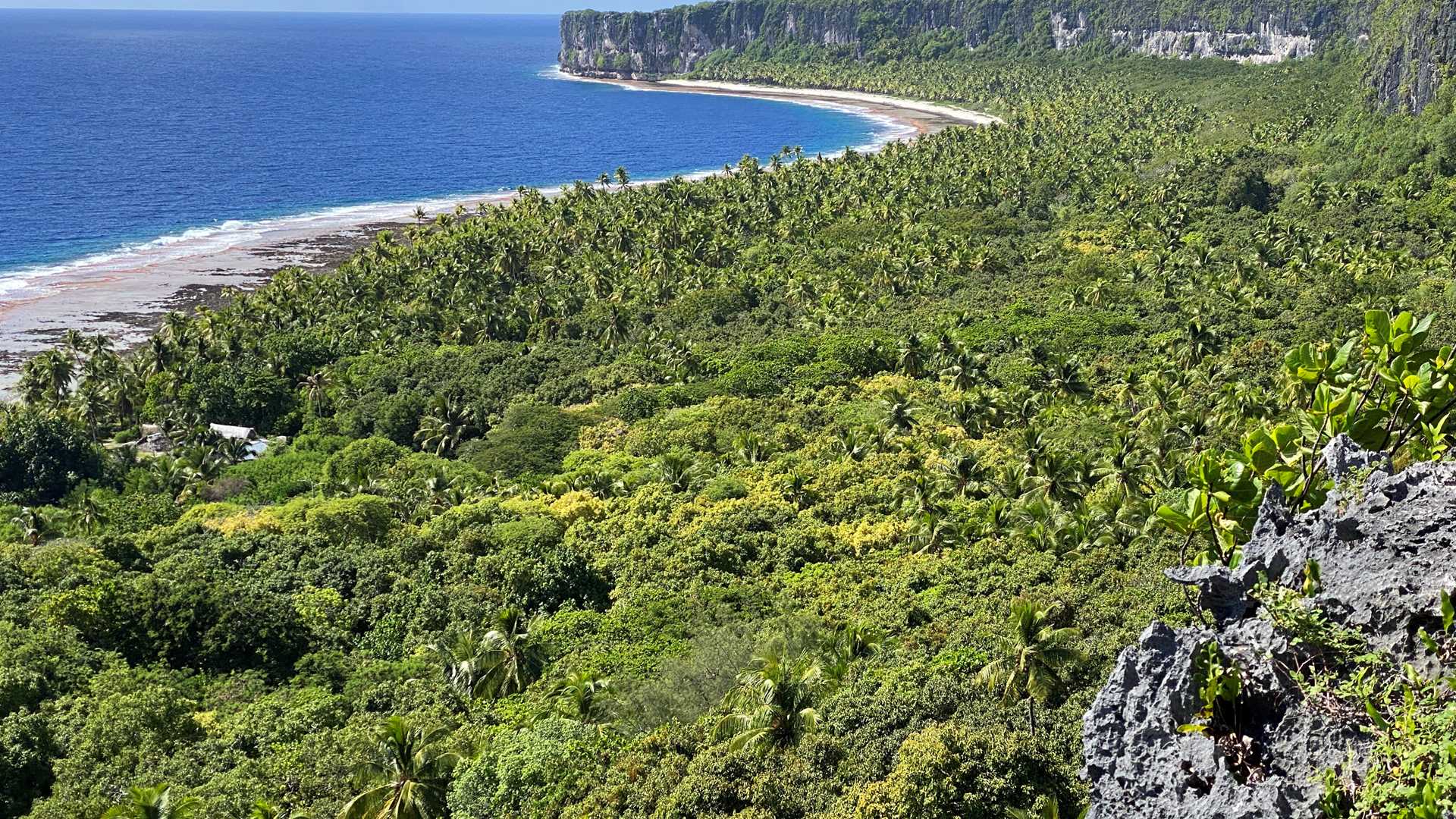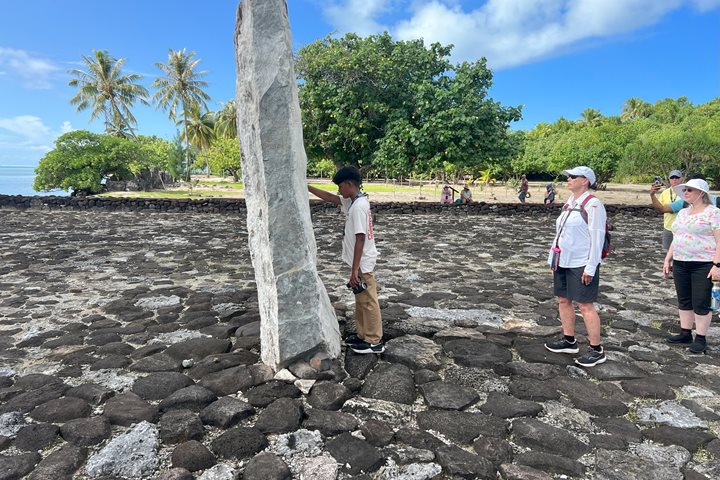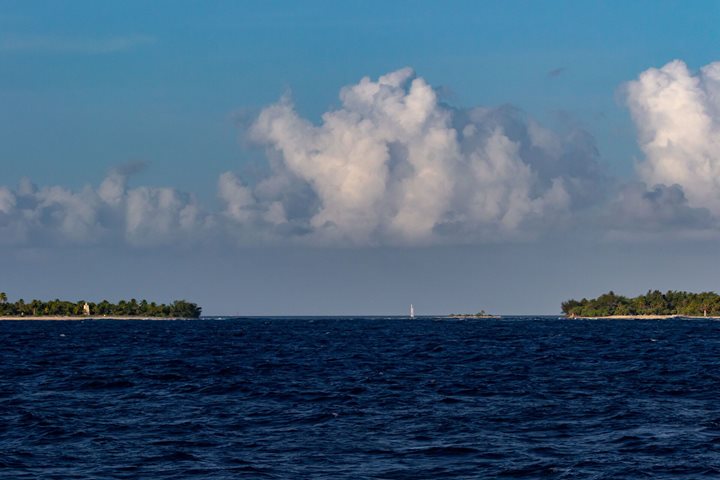This morning, National Geographic Orion awoke off the uplifted shores of Makatea in the Tuamotu archipelago. Makatea is a unique island in a chain of atolls. Unlike the rest of the Tuamotu chain, Makatea is an uplifted coral atoll. Makatea once looked like the other Tuamotus, a ring of coral with a stunning turquoise lagoon. Around two million years ago and 150 miles southwest, Tahiti began to form. The weight of the new volcanic island depressed the seafloor beneath it, creating a bulge that lifted Makatea out of the water. The geologic uplift is fascinating, and Makatea is unique in that it is one of three important phosphate deposits in the Pacific. This deposit was discovered around 1860. By 1908, an enterprise had formed that led to its extraction. Using shovels and buckets, men from Japan, China, Vietnam, and Polynesia extracted 11 million tons of phosphate in the 55-year span of the operation.
After breakfast, we went ashore to explore this fascinating island. Birders searched for the three island endemics while hikers visited viewpoints and walked across the island amongst cavernous holes of uplifted coral where the phosphate was extracted. At the end of the road, our reward was a cold-water swim in an amazing cave!
After lunch, we did a drift snorkel off the almost continuous band of cliffs that make up the amazing coastline of Makatea.
Photo caption and photographer: Viewpoint overlooking beautiful Makatea. Photo by Elise Lockton






